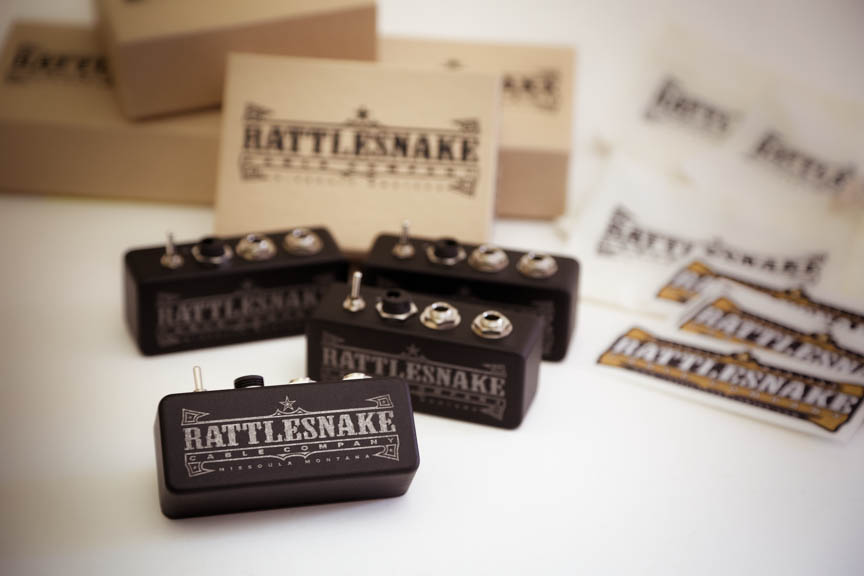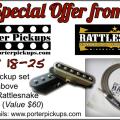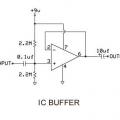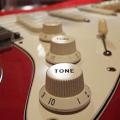 Many of you know I started Rattlesnake Cable Company a few years ago. For those that don’t, I wanted to start a business offering great sounding instrument cables assembled here in Montana to musicians around the world. I absolutely LOVE being a part of this business because it’s more than me – it involves my family and friends, and the great community of musicians that have rallied around Rattlesnake!
Many of you know I started Rattlesnake Cable Company a few years ago. For those that don’t, I wanted to start a business offering great sounding instrument cables assembled here in Montana to musicians around the world. I absolutely LOVE being a part of this business because it’s more than me – it involves my family and friends, and the great community of musicians that have rallied around Rattlesnake!
While working on cables, long time EffectsBay reviewer and awesome friend/guitar player, Jimmy, suggested that I start building line buffers. Again, if you’ve followed this blog, you know I’m a fan of buffers. Buffers are mysterious, and when I talk with musicians that don’t have one, I do get a puzzled look as to what they’re for. But, they really do make a difference with your signal going to the amp. I don’t want to talk to tech about impedance, etc. The simple explanation, is there there are varying factors from your pickups to the cable to the run of pedals that affect the tone going to the amp. Most typically, cable capacitance can be one source of tone manipulation. Longer runs of copper will cause higher levels of capacitance, which translates to loss of high end frequencies going to the amp (ie: muddy tone) this is similar to how your tone knob works on a guitar. Low output pickups, single coils, etc might have have a resonance bump that drops off higher frequencies by the time it gets to the pedals. If all of your pedals on your board are true bypass, with long runs of cables, you’ll experience cable capacitance. Don’t think of this as ‘pure’ tone, but the frequencies being dropped off as the signal travels from the pickup to the final end point.. the amp. What the buffer does is give you that high end back. Some refer to it as the ‘glassy top end’ or if you like the ‘pick on string’ sound, this might be something you’re after.
Some people like to position the buffer in their pedal board. Typically, buffers should be place first.. or last. Some fuzz pedals (usually germanium based fuzzes) react differently with the buffer in front. Notice.. I didn’t say ‘bad’. Some people like a buffer in front of a fuzz. You always need to trust your ears. Another location that is good, is before passive volume pedals. Volume pedals can be a major tone suck, and having a buffer in front of it, can help.
If you have some time.. read these two posts I did a while back on buffers – “Let’s Talk about Buffers” and “Visual Sound (buffered bypass) and Route 808” great stuff on buffers!
Okay… let’s get back to Rattlesnake Line Buffers. So I took Jimmy’s advice and started offering Line Buffers! This is an OpAmp based circuit. Shawn from Loud Button Electronics took my original circuit layout and got it prepped (with some great modifications) to be printed on circuit boards here in the United States. The buffer also features a true bypass toggle switch and LED indicator (discreet – not blinding), which makes it easy to hear the difference depending on where you’re placing the unit. All the jacks/switches/power are top mounted, so it’s easy to mount and tuck away on your pedal board. The enclosure is a matte powder coated enclosure with a laser etched logo. I’m very proud of this unit.. and it sounds great!
If you’re interested in a line buffer, check out the Rattlesnake Cable Company Line Buffer. Pricing and purchase information can be found here.





Leave a Reply